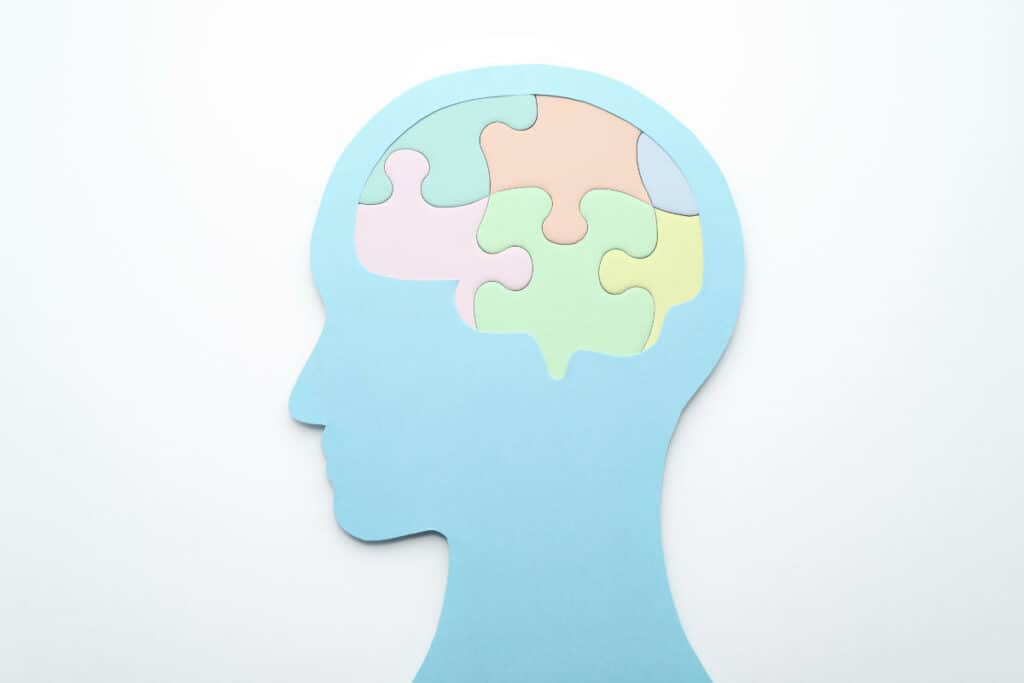Autism is a term used to describe a range of neurodevelopmental disorders that affect a person’s ability to communicate, socialise, and interact with the world around them. The autism spectrum refers to a range of conditions that affect how people perceive and interact with their environment, and their severity and impact can vary widely.
This Autism Awareness Week, we are taking a closer look at the autism spectrum scale and the three levels of functioning that define it. Read on to find out more.
What is Autism?
Autism, also known as Autism Spectrum Disorder (ASD), is a complex neurological condition that affects communication, social interaction, and behaviour. It is a developmental disorder that typically appears in early childhood and lasts throughout an individual’s life. The severity of symptoms can vary widely, with some individuals experiencing only mild challenges while others may require significant support in their daily lives. Autism is thought to be caused by a combination of genetic and environmental factors, although the exact cause is still not fully understood. There is no known cure for autism, but early diagnosis and intervention can help individuals with autism lead fulfilling lives.
Characteristics
ASD can present with a wide range of characteristics, and the severity and combination of symptoms can vary greatly between individuals. However, some common characteristics of autism include:
- Challenges with Communication: Difficulty with verbal and nonverbal communication, such as using and understanding language, interpreting tone of voice, and making eye contact
- Social Interaction Difficulties: Difficulty with social interaction and understanding social cues, making and maintaining friendships, and engaging in group activities
- Repetitive Behaviours: Repeating certain behaviours or routines, such as hand-flapping, rocking, or lining up objects
- Sensory Sensitivities: Sensitivity to certain sensory stimuli, such as loud noises, bright lights, or certain textures
- Fixation of Specific Interests: Strong interest in a particular topic or subject, often to the exclusion of other interests
- Difficulty with Change: Difficulty coping with changes in routine or unexpected changes in their environment
- Intellectual Abilities: While individuals with ASD may experience challenges with social interaction, communication, and behaviour, they can also display exceptional abilities in areas such as mathematics, music, and art
It’s important to note that not all individuals with ASD will display all of these characteristics, and the severity of each symptom can vary greatly between individuals.
What is the Autism Spectrum?
Many conditions on the autism spectrum are associated with communication and social interaction difficulties, as well as repetitive behaviours, interests, and activities. The spectrum is broad and includes a variety of symptoms and degrees of impairment, which is why it is also referred to as the ‘spectrum.’
The fifth edition of the Diagnostic and Statistical Manual of Mental Disorders (DSM-5) provides a comprehensive framework for diagnosing autism. The DSM-5 identifies two main diagnostic criteria: social communication deficits and restricted and repetitive behaviours or interests. To be diagnosed with autism, a person must have persistent deficits in both areas that significantly interfere with their daily life.
The Levels of the Autism Spectrum Scale
To help differentiate between the varying severities of autism, the Autism Spectrum Scale is used. This diagnostic tool is used to assess and diagnose ASD in adults and children. There are three functional levels of autism based on the scale. These scores are based on the level of support a person needs to function in daily life and the level of impairment.
Level 1: Requiring Support Individuals
Individuals at Level 1 of the Autism Spectrum Scale require some support to function in their daily life. They may have difficulty initiating social interactions and maintaining them, and they may struggle with nonverbal communication. They may also engage in repetitive behaviours or have specific interests that are narrow in scope. However, they are able to function independently in many areas of their life, such as self-care, and they can generally adapt to new situations.
Level 2: Requiring Substantial Support Individuals
At Level 2, these people require substantial support to function in their daily life. They may have significant difficulty with social interactions, including initiating and maintaining them, and they may have a limited ability to communicate, both verbally and nonverbally. They may also engage in repetitive behaviours or have specific interests that interfere with their ability to function independently. They may require support in many areas of their life, including self-care and adapting to new situations.
Level 3: Requiring Very Substantial Support Individuals
Level 3 of the scale requires very substantial support to function in their daily life. They have severe deficits in social communication and interaction, including initiating and maintaining relationships, and they have limited or no ability to communicate, either verbally or nonverbally. They may also engage in intense repetitive behaviours or have specific interests that significantly interfere with their ability to function independently. They require support in all areas of their life, including self-care, and they may have difficulty adapting to new situations.
It is important to note that the autism spectrum scale is not a measure of intelligence or cognitive ability. Individuals with autism can have a wide range of cognitive abilities, from intellectual disability to exceptional intelligence. The scale is simply a way to categorise individuals based on their level of impairment and the level of support they require.
An Evaluation of the Scale
It’s important to note that these levels are not definitive or exhaustive, and each individual with autism is unique. While the scale has its advantages in ensuring the majority of autistic people have access to the right level of support for their individual needs, there are some limitations.
With an autistic condition within Level 1, it is possible for these individuals to mask their difficulties, making it challenging to identify and diagnose ASD. For those in Levels 2 and 3, as communication and social interaction can be extremely difficult, there is a reliance on observations to make a diagnosis. When considering each level, there must be an awareness of the full extent of an individual’s strengths, challenges, and abilities.
However, it is also essential to understand that autism is a lifelong condition, and early intervention and support can make a significant difference in the quality of life for individuals and their families. In the UK, there is increasing awareness and support for those with autism, including the Autism Act 2009 and various national and local initiatives.
In addition to the Autism Spectrum Scale, there are additional tools which should be used when making a diagnosis or considering what level of care will best suit the individual.
Takeaways
The ASS is a useful tool for diagnosing ASD and understanding an individual’s challenges and support needs. However, it is important to recognise that each individual with ASD is unique and may not fit neatly into one of these three levels. And, as we continue to learn more about autism, it’s crucial to recognise and celebrate the strengths and talents of individuals on the spectrum and provide them with the resources and support they need to thrive.
Autism Testing in Adults and Children
As the criteria for each level may not capture the full extent of an individual’s challenges or strengths, a comprehensive evaluation of an individual’s needs and strengths is necessary to provide appropriate support and interventions. At Midland Health, we provide detailed autism testing for both adults and children, book a consultation today.

